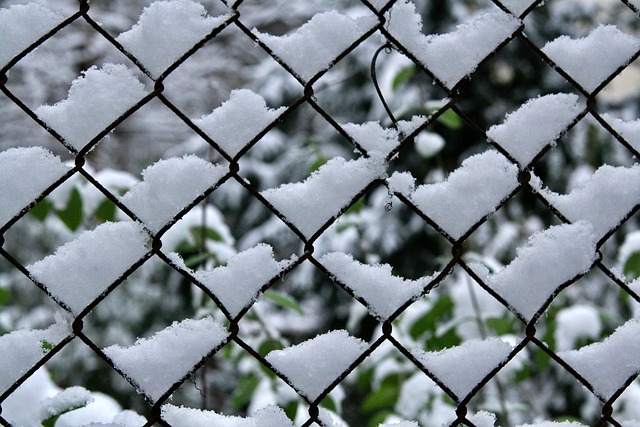In the quest for outdoor privacy, a well-installed fence can transform your New Bedford, MA space. This comprehensive guide delves into the world of privacy fences, offering insights on various types, benefits, and essential planning steps. From selecting durable materials to navigating local regulations, you’ll learn how to create a peaceful haven. We provide a step-by-step installation process and expert tips for maintenance, ensuring your fence remains a functional and aesthetically pleasing addition for years.
- Understanding Privacy Fences: Benefits and Types
- Planning Your Privacy Fence Installation in New Bedford
- Choosing the Right Materials for Durability and Aesthetics
- The Installation Process: Step-by-Step Guide
- Local Regulations and Permits for Privacy Fences
- Maintaining Your Privacy Fence: Tips and Best Practices
Understanding Privacy Fences: Benefits and Types
Privacy fences serve as more than just barriers; they are a statement about personal space and security. In New Bedford, MA, where outdoor living is cherished, a privacy fence offers a sense of tranquility by shielding your yard from prying eyes. These fences come in various types tailored to different needs and landscapes, ensuring you find the perfect fit for your home.
From wood to vinyl, chain link to iron, each material offers unique aesthetics and levels of durability. Wooden fences exude warmth and natural charm but require more maintenance. Vinyl fences are low-maintenance alternatives with a variety of styles available. Chain link fences provide security without sacrificing visibility, while iron fences offer both privacy and an elegant look. Choosing the right type depends on factors like desired level of privacy, budget, and your yard’s layout.
Planning Your Privacy Fence Installation in New Bedford
When planning your privacy fence installation in New Bedford, start by assessing your property and needs. Consider the purpose of the fence – is it for security, privacy, or aesthetic appeal? Measure the perimeter to determine the required length and style. Choose from various materials like wood, vinyl, or metal, each with unique maintenance requirements. Research local regulations and obtain any necessary permits before hiring a professional installer who can ensure your fence aligns with building codes and safety standards.
Create a detailed design, factoring in entrance gates, exit points, and any specific features you desire. Consult with the contractor about these elements to ensure they fit within your vision and budget. Regularly communicate throughout the process to address any concerns or adjustments needed, ensuring a successful privacy fence installation that meets your expectations.
Choosing the Right Materials for Durability and Aesthetics
When it comes to privacy fences, selecting the right materials is key. You want a fence that not only offers the desired level of seclusion but also withstands the test of time and various weather conditions. Opt for high-quality, durable options like treated wood or vinyl cladding. These materials are known for their resistance to rot, decay, and insect damage, ensuring your fence remains sturdy for years.
Aesthetically speaking, consider the finish and color that complement your property’s overall look. Paint or stain options can enhance the visual appeal while also protecting the surface from environmental factors. Whether you prefer a natural wood appearance or something more vibrant, choosing materials that align with both durability and aesthetics will result in a fence that serves its purpose beautifully.
The Installation Process: Step-by-Step Guide
The installation process for a privacy fence begins with a thorough site assessment and preparation. This includes measuring the perimeter, marking out the layout, and ensuring all necessary permits have been obtained. The next step is to excavate the area where the posts will be placed, creating holes deep enough to accommodate the wooden posts. Once the holes are dug, steel posts are set in place, ensuring they’re level and secure.
After the posts are firmly in the ground, horizontal rails are attached at regular intervals. These rails provide a framework for the fence panels, which are then securely fastened using brackets. The final step involves adding the privacy slats or panels, creating a seamless, solid barrier that offers both security and aesthetic appeal.
Local Regulations and Permits for Privacy Fences
When planning a privacy fence installation in New Bedford, it’s crucial to understand local regulations and permit requirements. These guidelines are put in place to ensure neighborhood harmony and safety. Every town and city has its own set of rules regarding fence heights, materials, and locations. For instance, some areas may restrict the height of fences to maintain line-of-sight for emergency vehicles, while others might have specific requirements for fencing near property lines or streets.
Obtaining the necessary permits is a critical step in the installation process. Homeowners should contact their local building department to inquire about permit applications and any associated fees. These permits ensure that your fence complies with local laws and can help avoid potential issues down the line, including fines or orders to remove the fence.
Maintaining Your Privacy Fence: Tips and Best Practices
Keeping your privacy fence in top condition is essential to maintaining its effectiveness in shielding your space from prying eyes. Regular cleaning, including sweeping and hosing down debris, ensures a clear view and prevents any buildup that could obscure your line of sight. Inspecting the fence for any signs of damage, such as rotten posts or loose panels, is crucial. Promptly repairing or replacing these components will prevent further deterioration and maintain the overall integrity of your barrier.
Consider a yearly deep cleaning involving power washing to eliminate stubborn dirt, algae, or mold. This practice extends the life of the fence while preserving its aesthetic appeal. Additionally, applying a fresh coat of paint or sealant annually can protect against weather damage, ensuring your privacy fence remains a durable and effective solution for many years.
